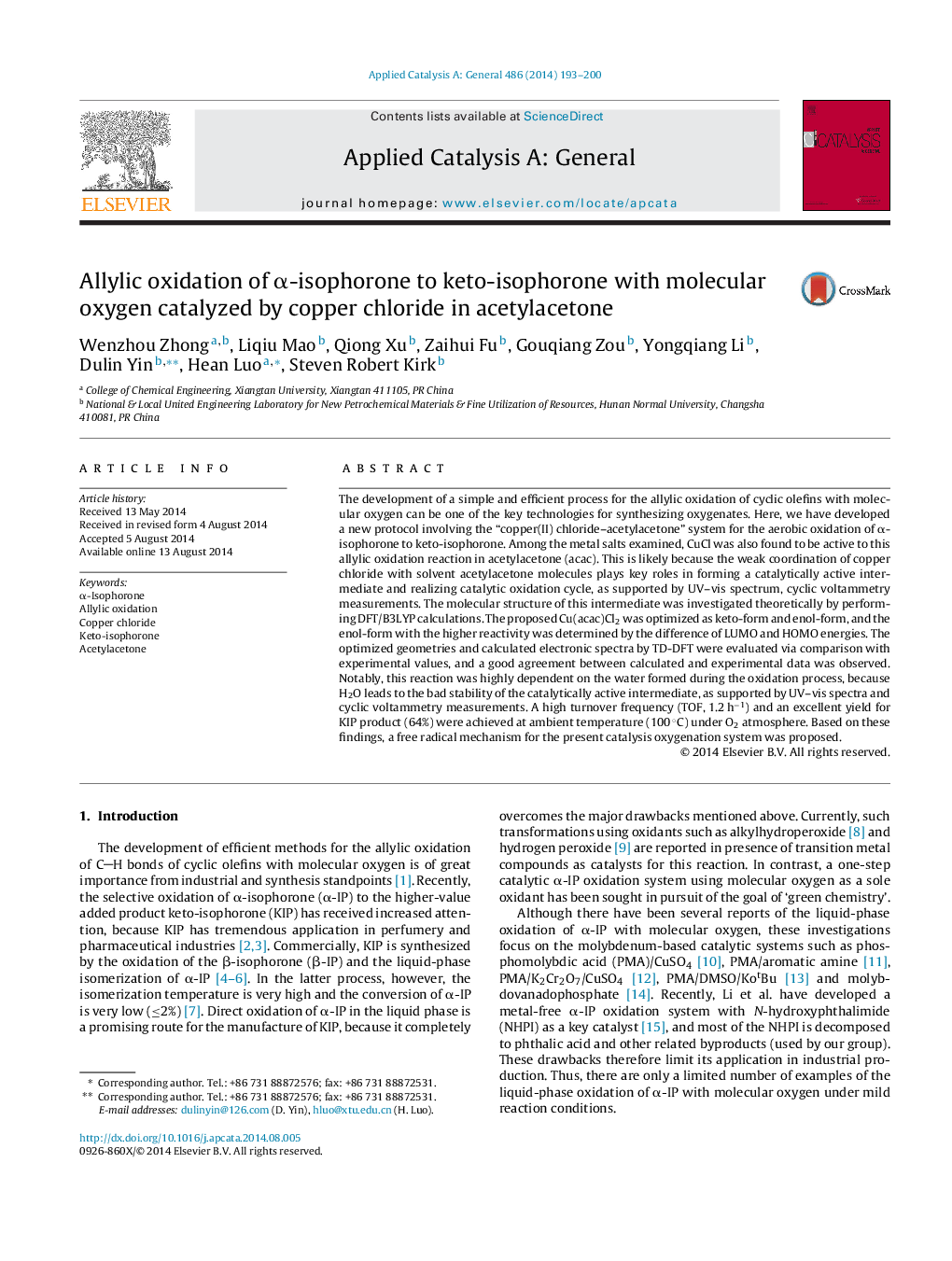| کد مقاله | کد نشریه | سال انتشار | مقاله انگلیسی | نسخه تمام متن |
|---|---|---|---|---|
| 39446 | 45823 | 2014 | 8 صفحه PDF | دانلود رایگان |

• CuCl2–acetylacetone system shows high efficiency for α-isophorone oxidation.
• The reaction strongly depends on the water formed during the oxidation process.
• Solvent acetylacetone plays key roles in forming a catalytically active intermediate.
• A weak coordination of CuCl2 with solvent acetylacetone molecules.
• The water formed is removed by bubbling and trapped by silica gel.
The development of a simple and efficient process for the allylic oxidation of cyclic olefins with molecular oxygen can be one of the key technologies for synthesizing oxygenates. Here, we have developed a new protocol involving the “copper(II) chloride–acetylacetone” system for the aerobic oxidation of α-isophorone to keto-isophorone. Among the metal salts examined, CuCl was also found to be active to this allylic oxidation reaction in acetylacetone (acac). This is likely because the weak coordination of copper chloride with solvent acetylacetone molecules plays key roles in forming a catalytically active intermediate and realizing catalytic oxidation cycle, as supported by UV–vis spectrum, cyclic voltammetry measurements. The molecular structure of this intermediate was investigated theoretically by performing DFT/B3LYP calculations. The proposed Cu(acac)Cl2 was optimized as keto-form and enol-form, and the enol-form with the higher reactivity was determined by the difference of LUMO and HOMO energies. The optimized geometries and calculated electronic spectra by TD-DFT were evaluated via comparison with experimental values, and a good agreement between calculated and experimental data was observed. Notably, this reaction was highly dependent on the water formed during the oxidation process, because H2O leads to the bad stability of the catalytically active intermediate, as supported by UV–vis spectra and cyclic voltammetry measurements. A high turnover frequency (TOF, 1.2 h−1) and an excellent yield for KIP product (64%) were achieved at ambient temperature (100 °C) under O2 atmosphere. Based on these findings, a free radical mechanism for the present catalysis oxygenation system was proposed.
Figure optionsDownload high-quality image (144 K)Download as PowerPoint slide
Journal: Applied Catalysis A: General - Volume 486, 22 September 2014, Pages 193–200